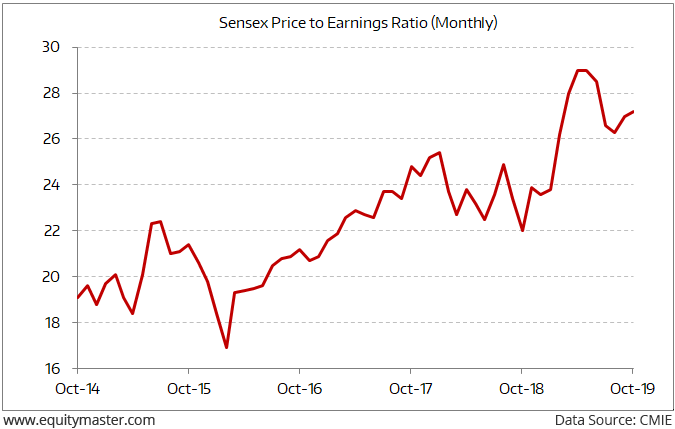- Home
- Todays Market
- Indian Stock Market News December 20, 2019
Indian Stock Markets Open Flat; Automobiles and Telecom Stocks Gain Fri, 20 Dec 09:30 am
Asian stock markets are higher today as Chinese and Hong Kong shares show gains. The Shanghai Composite is up 0.1% while the Hang Seng is up 0.5%. The Nikkei 225 is trading down by 0.3%. Wall Street's major indices resumed their rally with fresh records on Thursday as US Treasury Secretary Steven Mnuchin said an initial US-China trade deal would be signed in early January.
Back home, India share markets opened flat. The BSE Sensex is trading up by 73 points while the NSE Nifty is trading up by 9 points. The BSE Mid Cap index and BSE Small Cap index opened the day up 0.1% and 0.2% respectively.
Sectoral indices have opened the day on a mixed note with automobiles stocks and telecom stocks witnessing buying interest. Healthcare stocks and metal stocks are trading in red.
The rupee is currently trading at 71.11 against the US$.
Speaking of the Indian stock markets, how expensive is the Sensex? What has the trend been in recent years?
It would be interesting to see how the valuation of the index has moved over the last five years.
The chart below maps the price to earnings ratio of the Sensex from October 2014 to now.
How Pricey Is the Sensex Now?
Here's what Ankit Shah wrote about this in one of the editions of The 5 Minute WrapUp...
- It is worth noting that the Sensex has gained 44% over the last five years, compounding at an annual rate of 7.6% (excluding dividends).
Not quite impressive.
During the same period, the Sensex price to earnings ratio has mostly been in a rising trend, except some intermittent declines.
Between October 2014 and now, the gain in the Sensex price to earnings ratio is 42%. That means that the gains in the index have mostly come from expansion in the valuation multiple, and just meagerly from increases in earnings.
So, before taking the current market bullishness for granted, do weigh in the fact that the Sensex is quite expensively priced.
Speaking of Sensex at life highs, Tanushree Banerjee explains why the Sensex PE as a valuation metric, a bad market indicator.
She also reveals the right metric to use and you'll see immediately, what the earnings really say about the stock market.
Tune in to find out.
In the news from the economy. The Reserve Bank of India (RBI) has commenced something that is akin to the famous "Operation Twist" conducted by the US Federal Reserve by deciding to buy the long-tenor 10-year benchmark bonds worth Rs 100 billion and selling four short-dated securities worth the same amount under open market operations (OMOs).
On Thursday, the RBI said it would be buying the 6.45% yielding notes maturing in 2029 and would be selling four papers maturing in 2020.
The OMOs would be conducted on Monday.
The step is liquidity neutral, meaning the OMOs would not be adding any further liquidity to the system that is already flush with excess liquidity to the tune of over Rs 2 trillion.
The simultaneous purchase and sale of securities would also help in flattening the steep yield curve, where long tenor yields have been high and short-term yields have been low.
For instance, despite a 60-bps reduction in the repo rate across two monetary policies in August and October, the benchmark yield remains higher by 38 basis points since August. At the same time, the system liquidity has been so high that short-tenor yields have remained fairly low. In some instances, even the 364-day treasury bill yield has gone below the repo rate, a not so usual occurrence.
During the December monetary policy when the RBI governor was asked about the possibility of an Operation Twist, he did not make any specific comments on the matter.
As per some reports, the central bank may do more of these OMO purchases/sales in coming times that will eventually bring down excess supply of long-tenor bonds in the market.
How this pans out remains to be seen.
Moving on the news from pharma sector. As per an article in a leading financial daily, Lupin's alliance partner Concord Biotech has received the United States Food and Drug Administration (USFDA)'s approval for Mycophenolic Acid delayed-release tablets USP, 180 mg and 360 mg.
The drug is a generic equivalent of Myfortic tablets of Novartis Pharmaceuticals Corporation.
Mycophenolic Acid tablets are indicated for prophylaxis of organ rejection in adult patients receiving kidney transplants and in pediatric patients.
The drug had an annual sale of approximately US$174 million in the US. (IQVIA MAT September 2019).
In another development, Lupin launched Doxercalciferol injection, 4 mcg/2 ml (2 mcg/mL) multi-dose vials, having received an approval from the USFDA earlier.
Doxercalciferol injection is the therapeutic generic equivalent of Sanofi Genzyme's Hectorol Injection.
It is indicated for the treatment of secondary hyperparathyroidism in adult patients with CKD on dialysis.
According to IQVIA, Doxercalciferol lnjection had an annual sale of US$132 million in October 2019.
Lupin share price opened the day up by 0.2%.
To know what's moving the Indian stock markets today, check out the most recent share market updates here.
For information on how to pick stocks that have the potential to deliver big returns, download our special report now!
Read the latest Market Commentary



Equitymaster requests your view! Post a comment on "Indian Stock Markets Open Flat; Automobiles and Telecom Stocks Gain". Click here!
Comments are moderated by Equitymaster, in accordance with the Terms of Use, and may not appear
on this article until they have been reviewed and deemed appropriate for posting.
In the meantime, you may want to share this article with your friends!